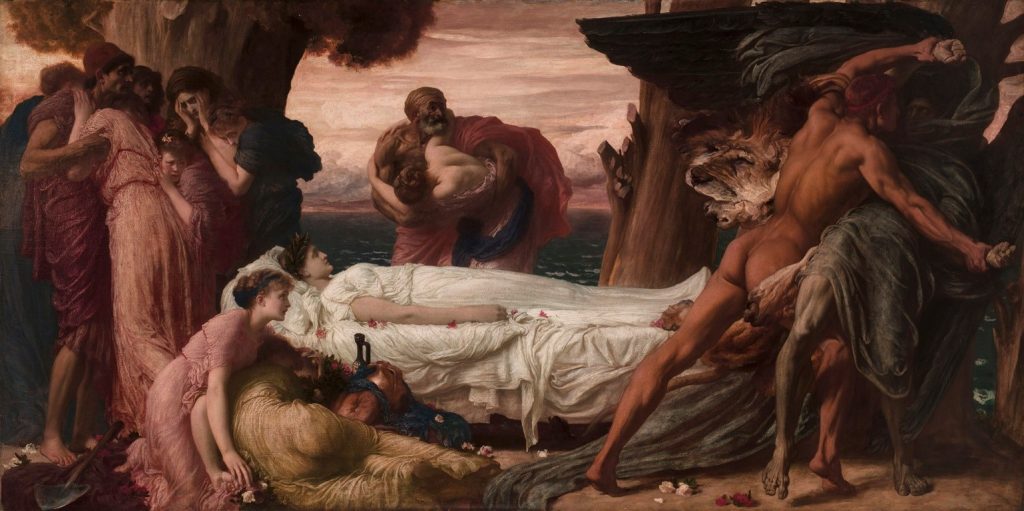
Hercules Wrestling with Death for the Body of Alcestis by Sir Frederic Leighton
Midway through a melodious ode about spring brimming with life and replete with dancing nymphs and Cytherean Venus—picture Botticelli’s Birth of Venus—Horace suddenly introduces Pallida Mors, pale death. It shocks, it dazzles, it pains the reader that in a meditation of sun-filled meadows and sprightly flowers greedy death dips its fingers into the scene and as Horace says “impartial, knocks at the door of both the poor man’s shack and the rich man’s villa.”
“Horrid!” some might complain, yet it is a good thing to look at death unflinchingly even when flowers abound and gray winter has long been replaced by sunshine. “Memento Mori (remember death),” recommend the classics. In one of his parables Christ says, “You fool, this night your life will be demanded of you; and the things you have prepared, to whom will they belong?”. This reprimand serves as an implicit call to remember that one day we will die and we know not when so memento mori that you may not live a distracted existence.
As a noteworthy member of the Aesthetic movement, the author of this painting, Sir Frederic Leighton, has a remarkable ability to render beauty. His paintings enchant with their soft contours and idealized bodies. They are a harmony rendered in soft ethereal colors and in a dynamic and playful usage of light and shadow.
This painting caught my eye in one of the Wadsworth Athenaeum’s enormous rooms draped with paintings of all different shapes and sizes. It was the beauty of its inhabitants and the strewn flowers and elegant drapery of vestments. As my eyes moved through the canvas I came to realize that the painting, however pristine, was about conflict. Then at last, on my eastward journey through the painting, my gaze fell on the ghastly figure on the right: Pallida Mors. Its dark cloak, black wings and repulsive skin-hue stand jagged against the elegiac scene. Death, however unwanted, however unexpected, irrupts even in the aesthete’s world. Like Horace, Leighton has Pallida Mors painfully present in a background of beauty. In enters Death, whether we like it or not.
I believe Leighton gives us the key to confronting Death. When faced with Death there are different ways to react and we see these played out by the characters in this painting. There are those like the woman clinging to the old man in the center or the one in olive garments laying near Alcestis’ head that turn their backs on it in despair and prefer not to look at Death at all. On the far left, we have a group of those who see death from a distance and only through partially covered faces or out of the corner of their eyes catch glimpses of Death, but in fear, they stay paralyzed. Then we have those who, although partially in terror, look at death and in doing so are able to console others. Finally, there is the one clad in lion’s skin who stares Death down and holds its destructive powers at bay. One must look at Death in the face, stare down those dark and hollow eyes, and realize that it is real, but that it does not have the last say. Say with Paul Kalanithi, cancer victim at age thirty and author of When Breath Becomes Air, “Even if I’m dying until I actually die, I am still living.”
Yes, we must accept the intrusion of Pallida Mors even on a splendid spring’s sunny day. We must Memento Mori, but only so that we may live, live to the full, live bright and sure, fighting the good fight to end our days knowing we competed well.
